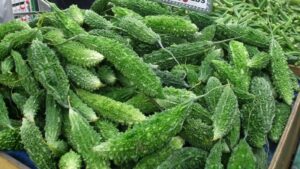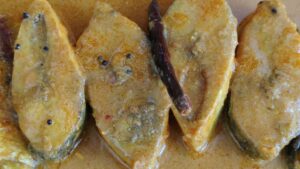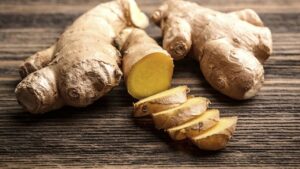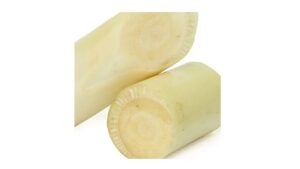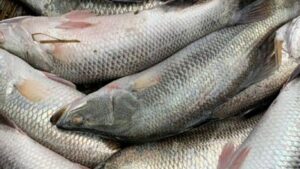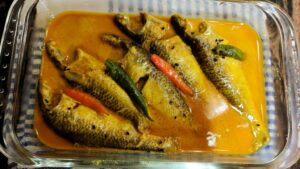Prawns hold a significant and cherished place in both Bengali and Indian ccooking, contributing to a plethora of delectable dishes that showcase the diverse flavors and culinary traditions of the regions.
In this exploration, I delve into the rich traditions of Bengali and Indian cuisines, where prawns take center stage.
From iconic Bengali creations like Prawn Malaikari and Daab Chingri to diverse regional Indian specialties, prawns continue to captivate the culinary imagination.
Discover cooking tips and considerations to perfect your prawn dishes, ensuring they taste nothing short of exceptional.
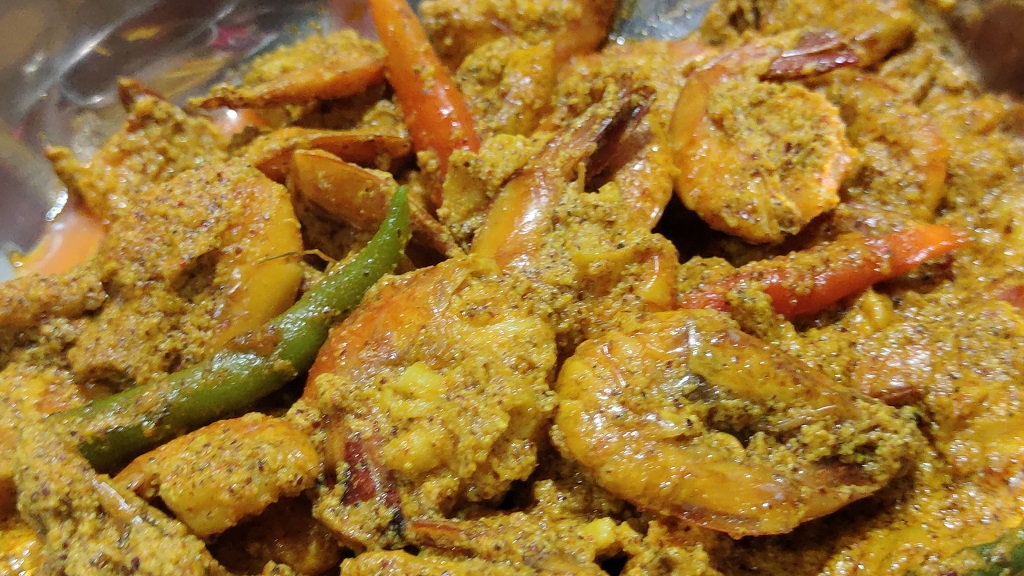
Key Takeaways:
- Prawns are renowned for their unique taste and are a popular seafood option, comparable to fish on the global culinary stage.
- Prawn dishes are quick to prepare, making them one of the most popular seafood choices worldwide.
- Prawns are available year-round and come in various sizes, from small to large (tiger prawns or jumbo prawns).
- Bengali and Indian cuisines feature prawns prominently, offering a rich tapestry of dishes that showcase diverse flavors, cooking techniques, and regional variations.
Use of Prawns in Bengali and Indian Cooking
Here’s a closer look at the use of prawns in Bengali and Indian cooking:
Bengali Cuisine:
Prawn Malaikari: Prawn Malaikari is a renowned Bengali dish that exemplifies the cuisine’s love for complexity and depth of flavor.
In this preparation, succulent tiger prawns are cooked in a flavorful gravy infused with a blend of Indian spices and the richness of coconut milk.
Prawn Malaikari is often reserved for special occasions, particularly weddings and festivals, and is celebrated for its unforgettable texture and taste.
Daab Chingri: Daab Chingri is another iconic Bengali dish, where prawns are ingeniously cooked inside a tender green coconut, creating a visually stunning and palate-pleasing culinary masterpiece.
It showcases the Bengali mastery of combining vegetables and non-vegetarian ingredients in a harmonious fusion of flavors.
Mocha Chingri and Ehor Chingri: Bengalis are renowned for their innovative fusion of vegetables and non-vegetarian items, as demonstrated in dishes like Mocha Chingri (prawns with banana flowers) and Ehor Chingri (prawns with jackfruit).
These age-old Bengali creations showcase the region’s culinary creativity and ability to elevate prawns with unique ingredients.
Jhinga in Mustard Curry: This popular Indian dish finds its roots in Bengali-style cooking. It involves sautéing medium to large prawns in pungent mustard oil before simmering them in a thick curd-based gravy.
Best enjoyed with rice, this exotic dish is often featured on special occasions such as weddings, anniversaries, and birthdays.
Indian Cuisine:
Regional Variations: Across India, prawn dishes exhibit regional diversity in flavors and preparation methods.
In Kerala, for instance, spicy and tangy prawns are favored, prepared with freshly ground Kerala-special masala blends that impart a unique and delightful tanginess to the curry.
Goan Delights: In Goa, where prawns are abundant due to its coastal location, you’ll find dishes like “Prawn Caldine,” a non-spicy prawn curry, and the fiery “Prawn Balchao,” which boasts flavors akin to pickles. Prawn Balchao is typically served hot with plain boiled rice.
South Indian Signature: Prawn dishes in South India, such as “Prawn Pepper Garlic Kuzhambu,” are characterized by the use of ingredients like tomato, onion, coconut, and tamarind sauce.
This preparation aligns with the traditional Kuzhambu style, which is highly popular in the southern regions of India.
Maharashtrian Delights: Maharashtra offers its own delightful prawn recipes, including “Kolambi Chi Kavaln,” a traditional prawn curry known for its versatility in preparation methods.
While the recipes may vary across the state, the core ingredients remain consistent, with prawns bathing in an aromatic curry infused with the tartness of tamarind and the flavors of roasted and ground spices.
North Indian Excellence: In North India, prawns are marinated and cooked in a tandoor (clay oven) to create “Tandoori Prawns,” known for their smoky flavor and tender texture.
Prawn Biryani is also a beloved dish that combines fragrant basmati rice with marinated prawns, spices, saffron, and garnishes.
Creamy Delicacies: Rich and creamy prawn dishes like “King Prawn Korma Curry” and “Prawn Makhani” are enjoyed during grand occasions.
These preparations involve slow-cooking prawns in flavorful, mildly rich gravies infused with the aromatic essence of Indian spices and often incorporate nuts for added depth.
Fusion Cuisine: In modern Indian cuisine, prawns are frequently featured in fusion dishes that blend traditional Indian flavors with global culinary trends. “Prawn Sushi,” “Prawn Tacos,” and “Prawn Pasta with Indian Spices” are examples of these innovative creations.
Street Food: In coastal Indian cities, street vendors offer delightful prawn snacks such as “Prawn Chaat” and “Prawn Pakoras,” showcasing the versatility of prawns as an ingredient.
Prawns are celebrated ingredients in both Bengali and Indian cuisines, contributing to a wide range of dishes that reflect the culinary creativity and diversity of these regions.
Whether you’re savoring the rich and complex flavors of Bengali dishes or the spicy and aromatic offerings from different parts of India, prawns continue to be a beloved and versatile component of the culinary tapestry.
Prawns Cooking Tips and Considerations
For those eager to master the art of preparing prawn dishes, certain guidelines ensure the best results:
Choosing Fresh Prawns: Always select fresh prawns that exhibit a moist appearance and lack any unpleasant odors.
Marination: For enhanced flavor, marinate the prawns with a combination of salt and turmeric, allowing them to rest for approximately half an hour.
Cooking Techniques: The cooking techniques for prawns can vary based on the specific dish and regional traditions.
Slow cooking is often favored for royal and rich preparations, which require patience but yield exceptional results. Avoid over-frying prawns, as prolonged frying can result in a less tender texture.
Use of Coconut: The use of coconut in prawn dishes depends on the recipe. For dishes like “Prawn Malaikari” and “Prawn Pepper Garlic Kuzhambu,” coconut plays a crucial role in imparting a unique texture and taste.
Cooking Time: Prawns typically require no more than 25 minutes to cook, even when prepared over medium heat. However, the cooking time can vary depending on the specific dish and whether it involves slow cooking, such as in biryani.
Part of Prawn: The choice to leave the head intact or remove it depends on personal preference. While the head may appear firm and shell-like, the remaining body offers a crispy and fleshy delicacy.
Determining Doneness: To ascertain when prawns are fully cooked, observe the crevice in the back of the prawn, where the vein is removed. This portion should turn opaque, indicating that the prawns are thoroughly cooked and ready to be enjoyed.
How to Make Prawn Fish Taste Good?
Always use the fresh prawns. Remove the black thread from its back and wash the prawns properly. Marinate them with some salt and turmeric and keep aside for half an hour.
To make any prawn dish taste good, you need to use the ingredients in the right proportion and follow the proper cooking style.
Perfection does not come in a day. So, if you want to perfect any prawn recipe, cook it frequently at your home to know how to make it better.
Questions & Answers:
Do You Need to Use Coconut to Cook Prawn?
It depends on which prawn dish you are cooking. If you are preparing prawn malaikari or prawn pepper garlic Kuzhambu, coconut is a must-use ingredient. In prawn malaikari, thick coconut milk adds a unique and creamy texture and taste to the dish.
How Long Does Prawn Fish Take to Cook?
If you are not preparing prawn biryani, prawns don’t take more than 25 minutes to cook even if they are cooked on medium flame. In the case of biryani, it may take a little more time as the dish is prepared on low flame.
Which Part of Prawn Fish is Best?
The head of tiger prawns or jumbo prawns is not removed. But in other types of prawns, heads are removed before frying them. The head looks and feels like a stiff shell but the remaining body is a pure crispy and fleshy delicacy.
How Do You Know When Prawn Fish is Cooked?
Watch the crevice in the back of the prawn. It is the part from where the vein is removed. It is the fleshiest part and looks transparent. When the flesh of the crevice turns opaque, the prawns are cooked through.
Conclusion
Prawns are like seafood celebrities worldwide due to their unique and delicate taste.
In Bengali and Indian cooking, prawns are a big deal, with dishes showcasing their versatility.
Prawns come in different sizes and are available year-round, making them a delicious and flexible ingredient to enjoy in various dishes.

